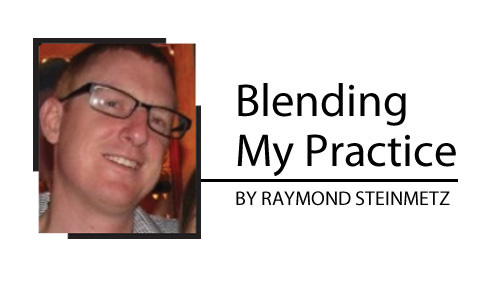When I first started teaching math a decade ago, I gave notes at the front of the room on an overhead transparency projector. The teacher who taught math in the room before me had retired and left all of her materials behind. In the file cabinets, I found an entire year’s worth of transparencies with math concepts organized by date and topic. Since it was my first teaching experience, I assumed that my role as an instructor was to stand in the front of the room and regurgitate these same notes to my middle school students.
I soon realized that this style of teaching was antiquated, so I started projecting PowerPoint presentations onto my whiteboard and taught using what I called a “poor man’s SmartBoard.” Since I was doing all of my teaching from the front of the room, I saw my whole-class explanations as of paramount importance to my practice. Subsequently, I believed that my particular way of explaining math was best for my students and better than other teachers. I soon gathered my own “filing cabinet of transparencies” in the form of PowerPoint presentations that I could use year after year.
The truth is, I am only one of a dozen or so math teachers that my students will have. Each math teacher will have their own style and version of teaching some of the same topics. The standards that my students are asked to master say nothing about the method of instruction or even the means to getting to an answer. How important really is my particular way of teaching math?
Through the process of blending my practice, I have learned that the material I am teaching is not as important as the soft skills I am fostering in my students for their future. My students will probably forget how to find the surface area of a pyramid two weeks after I teach it, but working in teams to solve complex problems is a skill they can use their entire lives. Blended learning helped me transform my role from the gatekeeper of information to a facilitator within my classroom. Here are some myths about blended learning that will help you get started.
1. Blended learning isn’t online learning
The first misconception many people make about blended learning is that it is akin to an online college course. As you can imagine, most teachers scoff at the idea of delivering content to children entirely online. The key word in blended learning that many people miss is blended. Blended learning classrooms use a mixture of online and offline tasks to help improve instruction for students. Not everything that happens in a classroom can be replicated online. That said, there are times where online learning is appropriate and can improve and streamline your practice. Blended learning takes the best of both worlds to better support the students that we serve.
2. Blended learning isn’t the same in every classroom
The personality of each teacher and their comfort level with technology will dictate how they implement blended learning. Before I started blending, I felt like my use of online activities in my classroom was sporadic and ineffective, even though I have a background as a computer engineer. I wanted to use more technology in my classroom, but I didn’t know how to incorporate it into the rigid structure of my class. I knew that I wanted to put the learning back into my students’ hands and have more time for exploratory- and inquiry-based learning. Blended learning is about finding the best fit for technology for you and your students while highlighting the great work you already do.
3. Blended learning isn’t going to replace the teacher
The goal of blended learning is to streamline the learning process. Through different instructional strategies, the hope is to optimize the teacher’s role. Many teachers will say that the most authentic classroom experiences come from either one-on-one conversations with students or small-group instruction. Before I received coaching from the Highlander Institute, I was spending most of my time in front of the class teaching, which severely limited my ability to see individual students. After reconsidering my role and delivering most of my instruction through self-made video, I redefined my role as a teacher from lecturer to facilitator. Rather than repeating the same lesson five to six times a day at the front of the class, I now spend my days analyzing formative assessments, identifying misconceptions, and finding ways to extend student learning. Blended learning will not replace the teacher with technology; it creates room for more authentic instruction for our students.
4. Blended learning isn’t just for schools with one-to-one initiatives
When I started my blended learning journey at the beginning of last school year, I was fortunate to be a part of a one-to-one initiative that put a device in the hands of every one of my students. Unfortunately, not every district has the resources to make this a reality. Luckily, there are several blended learning models, including station rotation, that help optimize the use of technology in small groups while providing structure for offline activities and small-group instruction.
[Editor’s Note: See previous Blending My Practice columns here.]
- How I gave my students voice and increased collaboration - November 2, 2018
- 4 myths about blended learning debunked - August 7, 2018
- How I found more satisfaction in teaching - June 21, 2018


